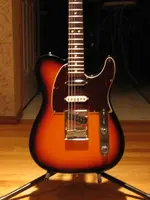There are several issues.
First of all, of course, is the problem that not all positions under the length of the strings are good sonically. Some locations are much better than others, and some are useless. The standard two-pickup paradigm works for most players in producing usable sounds. Of course, the three-pickup Strat is obviously popular, but I don't know how many guys use the middle pickup. Gibson has made three pickup Les Pauls (Custom and SGLPs -- not to mention the ES5 Switchmaster) but I don't know that they ever caught on. Steve Howe, of Yes, had a four-pickup modification done to a '56 LP Custom, but apparently he didn't use it that much.
Second, a tremendous amount of tonal variation is possible with only two pickups, especially when you get into active electronics, and generally speaking, builders go that direction rather than the multiple pickup route. I had
a G&L L2000 bass, and it was capable of great versatility with two pickups, three toggles, and three knobs.
Which brings up the third problem with multiple pickups: how do you control everything and put all the knobs? I may be typical, in that I don't like to constantly have to be fiddling with my axe when I'm gigging. I know others feel differently, but my impression is that they are in the minority. Look at the original Alembic, made for
Jack Casady. I can't imagine getting up on stage and expecting to keep track of all those knobs. Again, maybe that's just me.
Finally, there's ggunn's very salient point: you rapidly reach the point of added cost and diminishing returns. Maybe two pickups are twice as good as one (although all but one of my basses are single pickup Precisions), but three are not three times as good, nor four, four times...and by now, the cavities in the bodies are getting pretty crowded with pots and wires and whatnot.








